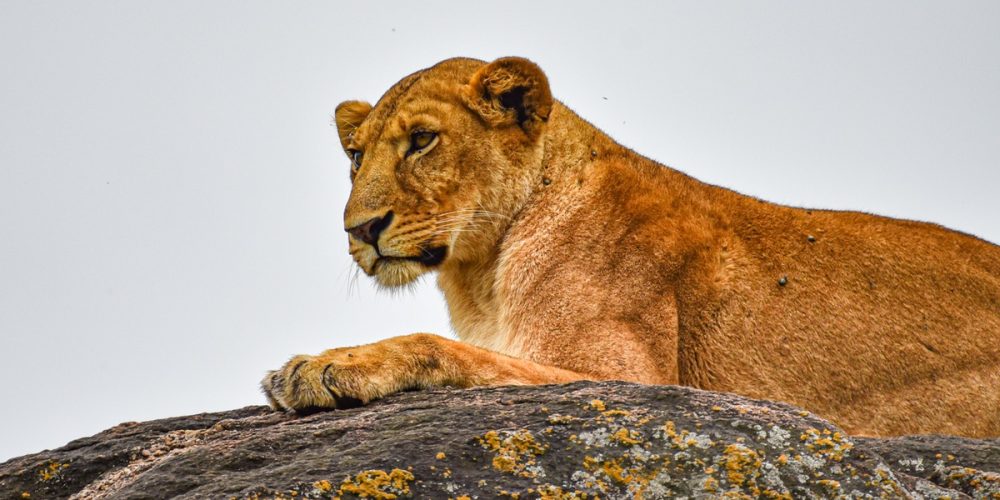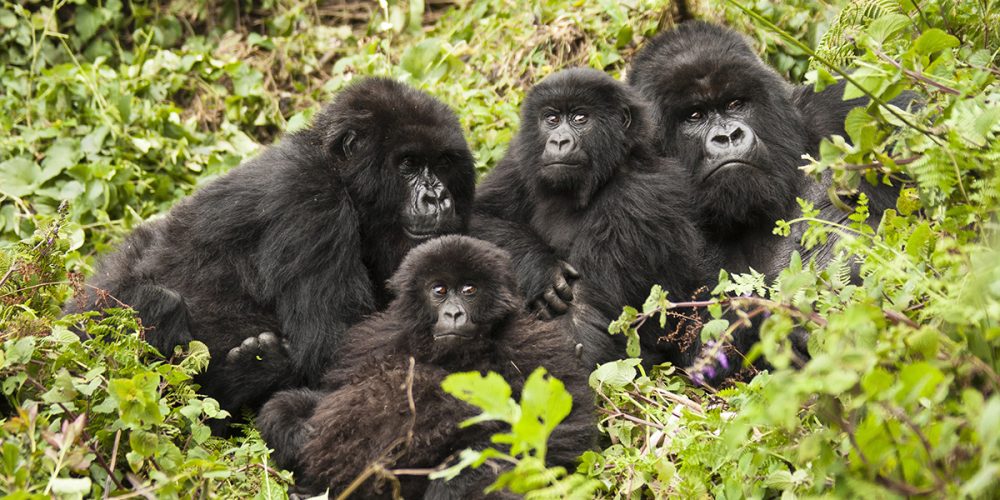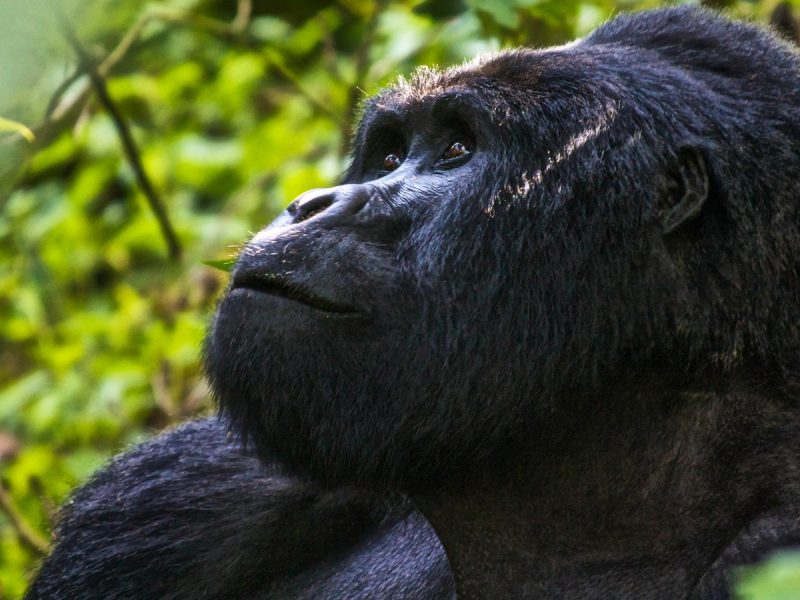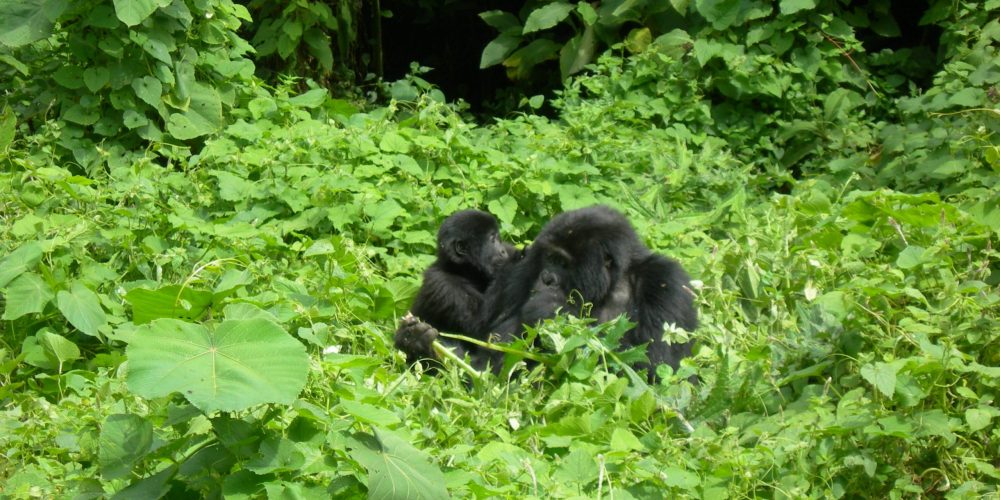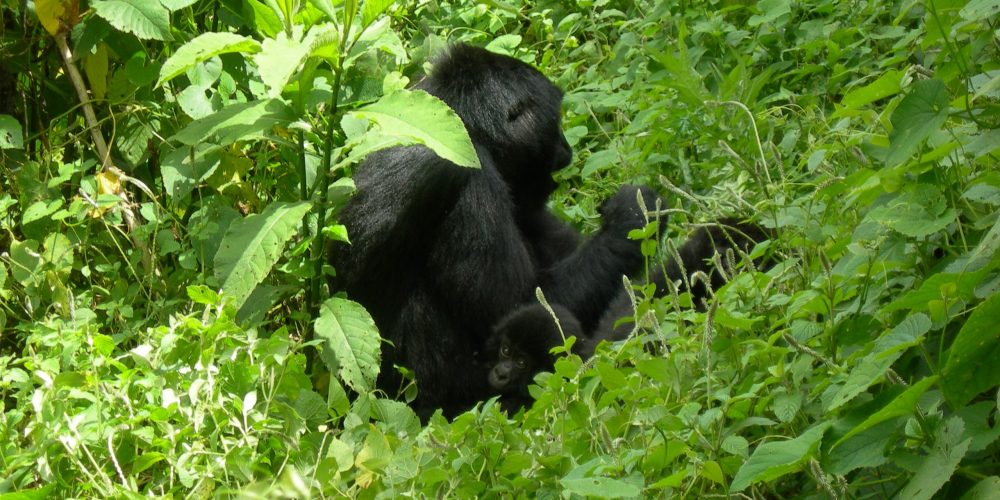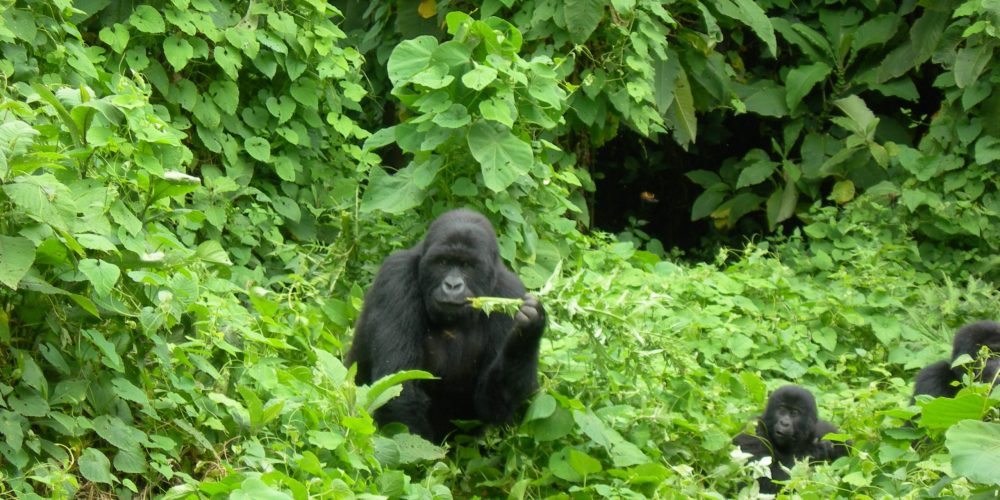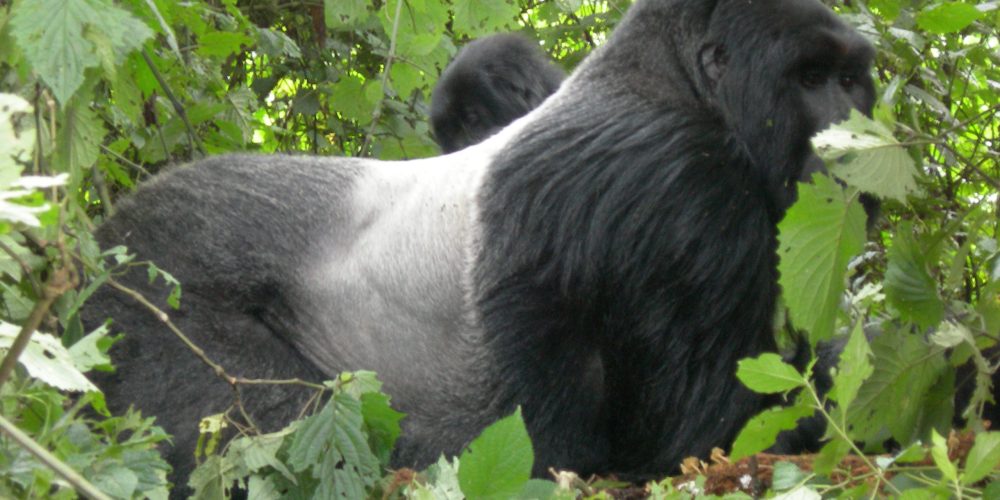Ultimate Gorilla Trekking Safaris to Rwanda – Deks Uganda Safaris
In Rwanda, gorilla trekking safaris happen in Volcanoes national park. Volcanoes national park is the setting for the famous ‘Gorillas in the Mist’ a movie about Dian Fossey’s work in the conservation of mountain gorillas. Rwanda has about 9 gorilla families available for the gorilla trekking safari experience. Gorilla trekking safaris in Rwanda start with a briefing from the ranger guides at Volcanoes national park headquarters where you join all the people looking to do a gorilla trek.
After the briefing experience, you are allocated different gorilla families to trek with and a ranger guide to lead you. Some of the gorilla families are near the briefing area and other groups require driving a distance before the start of the hike. Regardless of the gorilla group allocated to you, you will all be able to sight the mountain gorillas often found enjoying their breakfast and the little ones playing about.
Ultimate Rwanda Gorilla Trekking Safaris Combined with Wildlife Tours
4 Days Rwanda Gorilla Trekking Safari
This 4 Days Rwanda Gorilla Trekking Safaris tour and wildlife adventure takes you on a gorilla trek in Volcanoes National Park. A savannah safari in Akagera National Park, and a city tour in Kigali. The 4 Days Rwanda Gorilla Safari and Wildlife tour.
6 Days Primates Tour Uganda Safari
6 Days Primates Tour Uganda Savannah Safari. The Ultimate Gorilla tour & Chimpanzee Trekking Experience Trip takes you to different tourist destinations in the West and Southwestern part of Uganda. into Bwindi Impenetrable National Park for gorilla trekking; Queen Elizabeth National Park.
7 Days Uganda Rwanda Gorilla Safari
This 7 Days Uganda Rwanda Gorilla Safari shall take you through The Pearl of Africa – Uganda and The Land of a Thousand Hills – Rwanda. Enjoy lots of wildlife; including but not limited to: Birds, animals, reptiles, and aquatic life. Relax while we take you through this awesome, thrilling, and captivating adventure.
Frequently Asked Questions About Gorilla Safaris to Rwanda
Gorilla Trekking Safaris in Rwanda Preparation Tips
How do Gorilla Trekking Safaris in Rwanda Work?
When To Go Gorilla Safaris in Rwanda
Permits for Gorilla Trekking in Rwanda
How Fit Do I Need To Be To Track Gorillas?
What Kit Should I Take For Gorilla Trekking Safaris in Rwanda?
The Gorilla Trekking Experience in Volcanoes National Park
Mountain Gorilla Groups in Rwanda’s Volcanoes National Park
Gorilla Trekking Tours in Africa (Uganda, Rwanda, & Congo) – Deks Uganda Safaris
Gorilla Trekking tours is an experience where a group of people gets to hike/trek through the thick rainforests – the Virunga Massif for them to capture a glimpse of what mountain gorillas look like. And be able to view the environment in which mountain gorillas stay. Gorilla Trekking Tours in Africa take place in 4 safari destinations -National Parks in the whole world. They are located in 3 countries in Africa which include Uganda (Bwindi Impenetrable Forest & Mgahinga Gorilla national parks). Rwanda (Volcanoes National Park), and the Eastern Part of Congo (Virunga National Park), of which all are named as the Virunga Massif.
4 Days Gorilla Trekking Safari Tour Bwindi Forest Park
In just 4 Days of Gorilla Trekking Safaris Tour Bwindi Forest, you will enjoy the most exciting experience: meet a giant monkey; gorilla. This is the most popular tourist activity in Uganda and should not be missed! Reservation is required.
4 Days Rwanda Gorilla Trekking Safari
This 4 Days Rwanda Gorilla Trekking Safaris and wildlife tour takes you on a gorilla trek in Volcanoes National Park, a savannah safari in Akagera National Park, and a city tour in Kigali.
5 Days Gorilla Trekking Uganda Safari
On the 5 Days Gorilla Trekking Uganda Safari & Wildlife Adventure tour. You will enjoy a wildlife safari in one of Uganda’s most spectacular game reserves, Whispers of the Wild, Lake Mburo National Park.
6 Days Rwanda Gorilla Safaris Tour
This 6-day Rwanda safaris tour includes gorilla trekking, cultural encounters, entertainment, chimpanzee trekking, and a canopy walk in Nyungwe. This 6-day Rwanda gorilla safaris tour will experience the impact of the genocide in the city of Kigali.
7 Days Uganda Rwanda Gorilla Safari
This 7-day Uganda Rwanda Gorilla Safaris tour takes you through the Pearl of Africa – Uganda and Rwanda to see abundant wildlife including but not limited to birds, animals, reptiles, and aquatic life.
Gorilla Trekking Safaris in Rwanda Preparation Tips
- Carry along with rain gear.
- Insect repellent.
- Recommended clothing – long trousers and long-sleeved sweaters or shirts while in the forest to avoid insect and plant stings.
- Sturdy hiking boots are essential, especially ones you have used before.
- Drinking Water, however eating, drinking, and smoking near the gorillas are strictly forbidden. Your guide will communicate the designated time and place.
- Photography is permitted, although you must not use flash.
- Porters are available to help you carry your day-pack for a small charge.
- You will not be allowed to trek gorillas if you have a communicable disease like flu or cough.
Mountain gorillas live at high altitudes and this may cause difficulties in hiking up for some visitors. You should pace yourself, walk slowly, drink plenty of water and prepare adequately for this experience. Deks Uganda Safaris will purchase your gorilla trekking permits for you in advance for proper planning.
How do Gorilla Trekking Safaris in Rwanda Work?
The Virunga Mountains that straddle the borders of Rwanda, Uganda, and Congo are home to around 480 mountain gorillas. More than half of the world’s entire population; the rest live in Bwindi Impenetrable Forest national park in Uganda. In Volcanoes National Park, the Rwandan part of the Virunga, ten gorilla groups are currently habituated for gorilla safaris in Rwanda. More than anywhere else in the world.
Look into the eyes of a large silverback mountain gorilla and he’ll look back with a thoughtful, intelligent gaze, mindful that you’re another individual. Any apprehensions or nerves you might have had during your trek will melt away the minute you see your mountain gorilla family. Gorilla trekking safaris in Rwanda offer a magical encounter that transcends any other “wildlife” experience we know.
When To Go Gorilla Safaris in Rwanda
Gorilla trekking safaris in Rwanda can be done throughout the year. The trekking itself can be more arduous in the rainy seasons, during April–May and in November. But at an altitude of 2,000m and more above sea level, it can of course rain here at any time of the year. For more details, see Rwanda’s climate.
The most popular times for gorilla trekking safaris in Rwanda are during the drier months. Between December and February, and from about June to mid-September.
Permits for Gorilla Trekking in Rwanda
Securing permits for trekking gorillas, especially during the popular periods, can be difficult at short notice, so you should plan well ahead. Deks Uganda Safaris will make all the arrangements for buying your permits.
No more than 96 gorilla trekking permits are available each day, each costing US$1,500 per person for a one-hour visit. Travelers who are also spending a minimum of three days in either Nyungwe Forest National Park or Akagera National Park between November and May are entitled to a 30% discount, reducing the costs to US$1,050 per person.
Amongst other things, the gorilla permits pay for a 24-hour guard for each gorilla group (armed teams constantly track each habituated group – like royal bodyguards in the UK!). The fees also help to strengthen conservation efforts and to support the development of local communities.
How Fit Do I Need To Be To Track Gorillas?
You don’t have to be super-fit for a gorilla trekking safaris tour in Rwanda, but it does help if you have a general level of fitness. If only to enhance your overall enjoyment of the experience.
Depending on which group you track, and the time of year you go (gorillas tend to move down the mountains in the rains). You might find yourself walking on some pretty steep slopes for several hours.
On the other hand, you could reach your group after a 30-minute stroll. Either way, walking will be at a slow pace, with time for breaks if needed. But it’s best to be prepared for the most active option, and if nothing else. A few hills walk before you leave home would be beneficial.
What Kit Should I Take For Gorilla Trekking Safaris in Rwanda?
Paths on gorilla treks can be slippery, muddy, and steep so sturdy walking boots are essential. Some people take thick gardening gloves because of the brambles and nettles along the way, and you should wear long trousers rather than shorts.
A waterproof jacket may come in handy and take some water and a snack in case it’s a long trek. You might also find a walking stick or pole helpful; these are available at the start of the trek.
For a small fee of around US$10
Porters are available at the trailheads to carry your backpacks and to offer a hand during tricky parts of the hike. Even if you don’t need this service, hiring a porter is a helpful way to contribute directly to the local economy. And chatting to them as you walk can broaden your understanding of local life as well as enhance your gorilla trek.
For keen photographers, a camera is a must: taking your pictures of mountain gorillas is one of the most magical photo sessions you’ll ever experience. It’s as well to remember that the light can be poor in the rainforest and that use of flash is not permitted. You might also need to protect your camera against heavy rain.
The Gorilla Trekking Experience in Volcanoes National Park
Whilst a gorilla trekking safaris in Rwanda tour is likely to be a once-in-a-lifetime opportunity for most visitors. The staff at Volcanoes National Park have years of experience behind them. So treks to see the mountain gorillas are well organized and structured.
Having been allocated a specific group of “habituated” mountain gorillas. You’ll walk in groups of no more than eight people, the distance and terrain determined by the location of “your” group. The pace is unhurried, but be aware that the slopes are often steep, and the altitude, at over 2,500m, can be tiring.
Any apprehension you may feel is likely to vanish when you see the gorillas as they go about their day-to-day routines, feeding. Interacting with each other – and even watching you with interest. All the same, it’s important to bear in mind that they are vulnerable to such things as human colds. So there are strict rules in place to protect them.
Mountain Gorilla Groups in Rwanda’s Volcanoes National Park
The various Gorilla groups and their locations will change from time to time. Mountain gorillas often climb higher in the dry season and descend during the rains. They might move on due to pressure from wild gorillas, and individuals will often join other groups.
When tracking gorillas, it’s possible to request to visit a specific group once you are at the park headquarters, but this can never be guaranteed. These are some of the families currently habituated for gorilla safaris in Volcanoes National Park:
Originally studied by Dian Fossey, the Susa Group – also known as the Kurita Group – is the largest. With 38 individuals, including three silverbacks. In the summer months in particular it can be a tough trek to reach the Susa Group high up on Mount Karisimbi. But it’s well worth the effort because of their number and because, uniquely, it has a set of twins, a very rare occurrence in the world of gorillas.
Sabyinyo Group
The Sabyinyo Group has about 17 individuals, including two silverback gorillas, one of which, Guhonda, is the largest in the park. The group is usually found relatively close to the edge of the forest (about 20–a 40-minutes’ walk), between Sabyinyo and Gahinga.
Agashya Group
Also known by its former name Group Thirteen, was re-named when the dominant silverback Agashya won leadership over Nyakairima in 2010. The group usually lives close to the Sabyinyo Group but can range very far and high. It numbers about 22 gorillas.
Usually living between the Karisoke and Bisoke peaks are the Amahoro Group. Its 19 individuals under the calm leadership of Ubumwe, and the Umubano Group, which currently has 13 members. Both are usually further away from the headquarters than the Sabyinyo and Agasha groups, but easier to reach than the Susa Group.
Kwitonda Group
The Kwitonda Group has around 23 members and was habituated in the DRC. Having crossed the border into Rwanda in 2005, the group is known to have a much wider range than others. It was named for their dominant silverback, Kwitonda, who died in 2012; silverback Akarevuro is now in charge.
Hirwa Group
The Hirwa Group, meaning “lucky”, has around 18 gorillas, which came together from the Agashya and Sabyinyo groups. The group includes one silverback and one of only a few surviving pairs of mountain gorilla twins, Isango Gakuru and Isango Gato.
Volcanoes National Park
Volcanoes National Park (Parc Nationale des Volcans–PNV) is found in a chain of volcanoes that is home to the world’s few remaining mountain gorillas.
While the main focus of interest for most visitors in the Volcanoes National Park is Gorilla tracking. The park has got more than 200 bird species with a local vulnerable swamp-dwelling species; the Grauer’s rush warbler. While at least 16 Albertine Rift endemic are present, including handsome francolin, Rwenzori turaco, Rwenzori double collared sunbird, and others.
Besides gorillas, various mammal species can be seen in the forested national park. In Volcanoes National Park other activities can be done; such as nature walks. Hiking which is now well organized, from a one-day ascent of Karisimbi to a non-strenuous nature walk to a cluster of craters later. But the most exciting innovation is that tourists can now visit habituated troop of the near-endemic golden monkey.


